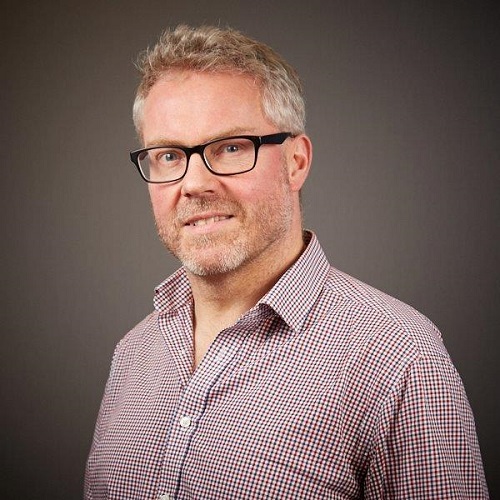Welcome back to hear how we all got on with our venture to create our 2024 CI Strategy and the plan to implement it using Hoshin Kanri principles. In my previous blog, Hoshin Kanri – a sustainable system of Strategy Implementation?, I explored our first encounter with Hoshin Kanri, principles and tools. Read on to discover the lessons learned and impact of using this clear strategic methodology.
Our first job for the 2024 CI Directorate Strategic Planning Day 2024 was to implement the learnings of the After Action Review (AAR) done with the team involved in last our 2023 Strategic Planning Day.
- A shift in timings was implemented as we wanted creation, implementation and commencement closer together to maintain momentum.
- The Key Improvement Workstream Lead role was much better defined. The goal is to complete the workstream progressively in 11 months, it is not you need to do ‘x’ every week.
- Volume of work – We rationalised this so that colleagues could only have one lead role and should only be involved in a maximum of three workstreams. We need to trust our colleagues, and this has reduced the workload for those who had previously multiple lead roles and five or six workstreams to deliver on.
- Workstream Control – The A3 document on excel was clunky at best and not user friendly. The purpose remains, however the tool we have chosen to use this year is Microsoft (MS) Planner, using a simple Kanban type structure of To Do, Doing, and Done.
Review 2023
Strategy Day 2024 started with a review of 2023. Each workstream lead provided a closure summary for the workstream using the below standard headings in no more than one sheet of A4.
- Problem Statement
- Objective and Scope
- Activity
- Achievement and Impact
- Outstanding/ Activities
These proved illuminating, not only picking out the workstream achievements against specific targets, but inclusion of the ‘outstanding’ section ensured we missed nothing in the transition to 2024. Secondly, we reviewed our 2023 objectives and how well we achieved them. Of 10 objectives , all were started, seven were completed, two were carried forward into 2024 and the last one although started, had stalled, more on this one later. All in all a great first record of achievement using this model.
2024 Baseline
Now we understood the impact of our efforts over the last 11 months we moved on to baseline where we are as a Directorate now. A lot had happened in 12 months, two departments came together, a new University Strategy was released, we are leading up at least one major new tactical University endeavour, as well as working on the 2023 strategy we identified for ourselves. This was tackled using the Strengths, Weaknesses, Opportunities, and Threats (SWOT) analysis again but with one slight tweak. The first question asked was to analyse our impact on our core purpose for the University, creating capacity and delivering tangible benefits. Once we had spent 30 minutes or so on this, we opened it out to the wider Directorate activities. The thinking here was to capture feedback specifically on our most desirable impacts from a University perspective.
Vision
After establishing our baseline position, next came a revisit of the Vision for the new Directorate. Last year we broadly tackled this however with the new nature of the Directorate it was important to finalise it.
‘To be the centre of excellence for programme, project management and continuous improvement’.
Brainstorm
The above was agreed to meet all criteria and this clarity gives impetus to progress to the next stage, brainstorming ideas of what needed done to bridge the gap between baseline and this future state. Brainstorming is a great fun session as you effectively have licence to heal the world. There were quickly more than 100 ideas on the board and when the well started to run a little dry we broke for lunch.
Brainstorm Analysis
No rest for the wicked they say and this proved true as those great brainstorm ideas needed some analysis. While the team trooped off to Sainsbury’s for a meal deal, I took the time to look for common threads and trends in the brainstorm ideas, and started to group the ideas into common themes. These themes would start to form the basis of our Key Improvement Priorities for the year ahead.
Strategy Matrix
Long Term Objectives
Once everyone was refreshed, the group started putting the 2024 Strategy Matrix together. For simplicity this is a copy of 2023 with the content deleted with the exception of long-term objectives, measures, and team members. To start we reviewed the long term objectives we had set last year, ensuring they were still relevant, and assessing the need to edit or add in light of changes in the external environment or University direction in the last year.
Key Improvement Priorities (KIP Workstreams)
The next step was to add the Key Improvement Priorities. During this process we reviewed all the ideas in each theme that translated to a KIP to ensure we all understood the proposal, there was no duplication, and there were definite benefits in pursuing them. Once these were clear we reviewed each long-term goal in the light of the KIPs to identify what we could achieve in the coming 12 months, our one-year objectives.
One-Year Objectives
This was a departure on the process from last year. In 2023 we created long term objectives, one-year objectives then KIPs. If you recall, I said one of the 2023 objectives had stalled, and the reason for this was poor alignment with KIPs, in other words the workstreams didn’t really cover the work needed. This change in order of activity is designed to ensure this doesn’t happen in 2024.
Measures of Success
To recap, we have our long-term objectives, our one year objectives, and the KIP workstreams that will achieve these, all identified and aligned. The next activity is to determine how we measure the progress of the workstreams against target metrics. This work in 2023 identified many measures which we didn’t currently record, which in turn caused some concern over progress. One of the lessons learned this year was to benefit from the 2023 reporting workstream and align the KIP workstreams with our existing set of measures and suite of reporting. This is a huge step forward and makes progress highly visible. Your measures need to be the few items your customers value you for. A contact centre might measure speed and accuracy of response for example.
Allocate Leads and Teams
Now we understand how to track the progress of each KIP workstream the final stage is to allocate accountable leads and team members to execute the work. Again, learning the lessons from last year, we capped the number of workstreams any one person could lead to a maximum of one. In the same spirit no one person should be working in more than three workstreams. This is an attempt to both speed the workstreams up with more streamlined teams and lighten the workload for each team member.
2024 Process and Control
Now we have taken all the SWOT suggestions and the brainstorm ideas, funnelled them down, and translated them into objectives and KIP workstreams, it’s important we control the progression of these. In 2023 we used monthly meetings and A3 documents however the lessons learned suggest the excel format of the A3 was overkill and cumbersome to use. For 2024 we will be using MS Planner and a simple To do, Doing, and Done kanban system, to monitor progress aligned to a monthly update session, to discuss progress and blockage removals.
To conclude, let us refer back to our initial question. Is Hoshin Kanri a sustainable system of Strategy Implementation?
I think we can definitely say that we are in a better place now as a Directorate than we would have been without the structure and discipline of considering strategy formally and linking it to measurable activity.
In addition to the softer benefits, we identified last month that we have a super new reporting suite on Power Platforms, we have embraced Microsoft Forms streamlining many manual processes, saving 100s of hours doing so. As a directorate we are more integrated with a benefits view being introduced for all Digital Business Cases. Our engagement has increased by over 20% and we have improved the take up of training to consistently between 80 and 85%.
I can only see 2024 being better. The lessons learned for year one have been adopted and I look forward to the clear, visible, charted progress in 2024 that the Hoshin Kanri approach provides.


